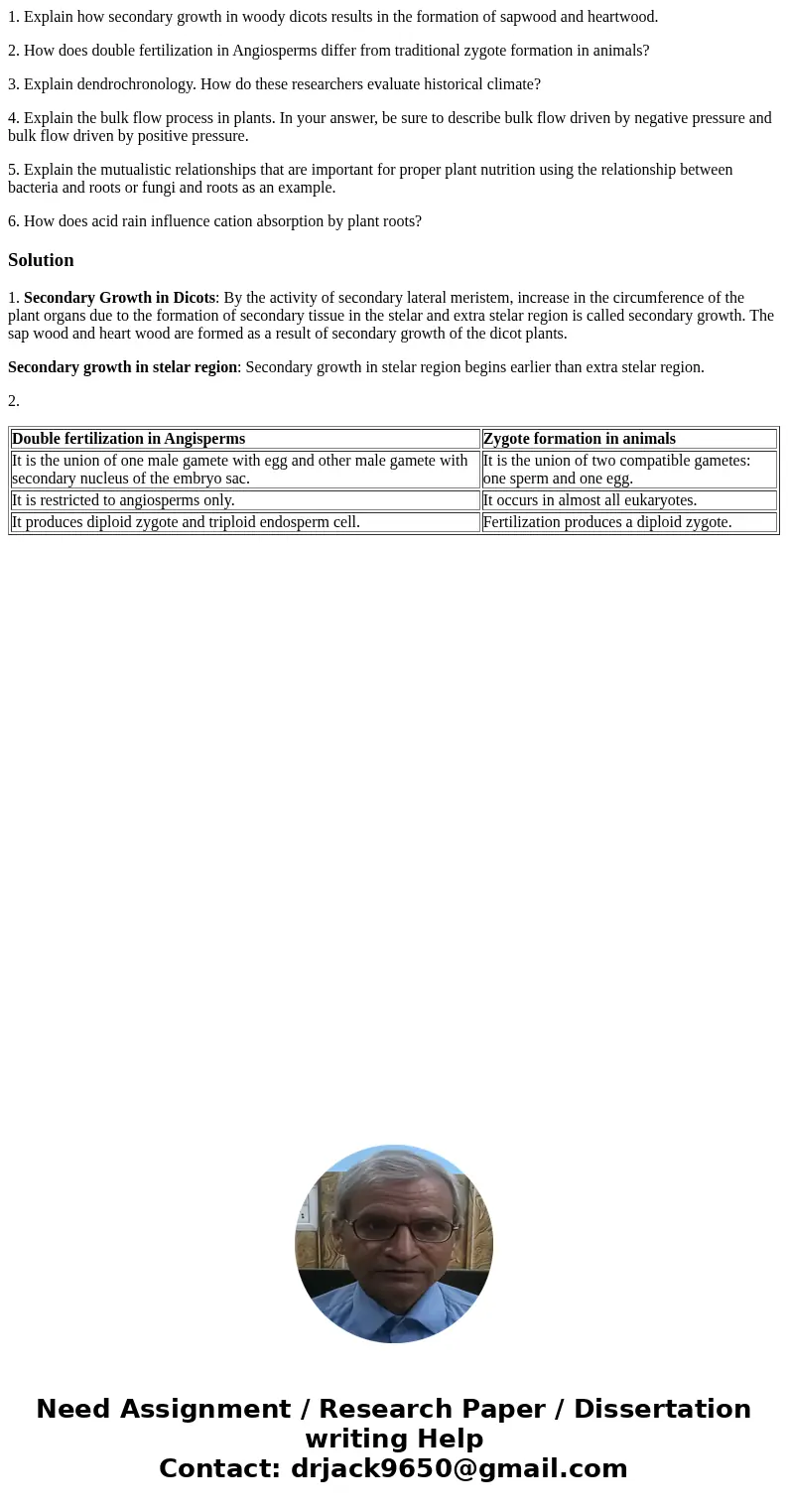1 Explain how secondary growth in woody dicots results in th
1. Explain how secondary growth in woody dicots results in the formation of sapwood and heartwood.
2. How does double fertilization in Angiosperms differ from traditional zygote formation in animals?
3. Explain dendrochronology. How do these researchers evaluate historical climate?
4. Explain the bulk flow process in plants. In your answer, be sure to describe bulk flow driven by negative pressure and bulk flow driven by positive pressure.
5. Explain the mutualistic relationships that are important for proper plant nutrition using the relationship between bacteria and roots or fungi and roots as an example.
6. How does acid rain influence cation absorption by plant roots?
Solution
1. Secondary Growth in Dicots: By the activity of secondary lateral meristem, increase in the circumference of the plant organs due to the formation of secondary tissue in the stelar and extra stelar region is called secondary growth. The sap wood and heart wood are formed as a result of secondary growth of the dicot plants.
Secondary growth in stelar region: Secondary growth in stelar region begins earlier than extra stelar region.
2.
| Double fertilization in Angisperms | Zygote formation in animals |
| It is the union of one male gamete with egg and other male gamete with secondary nucleus of the embryo sac. | It is the union of two compatible gametes: one sperm and one egg. |
| It is restricted to angiosperms only. | It occurs in almost all eukaryotes. |
| It produces diploid zygote and triploid endosperm cell. | Fertilization produces a diploid zygote. |

 Homework Sourse
Homework Sourse